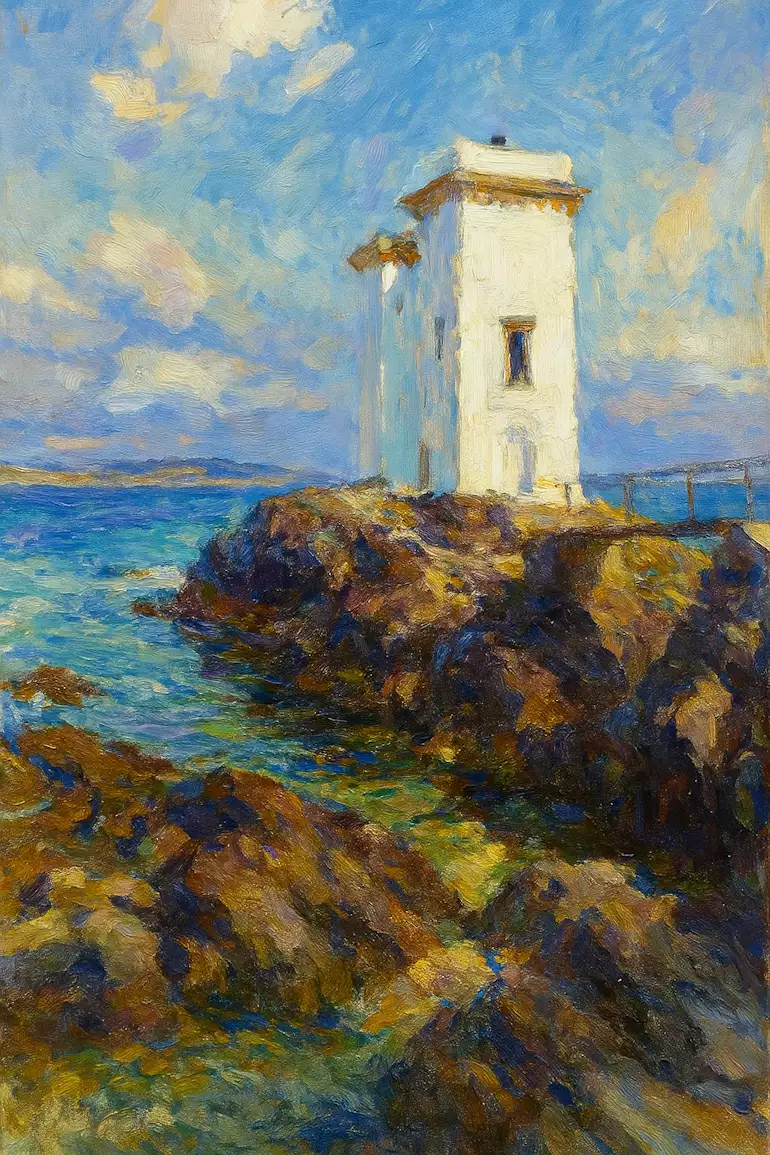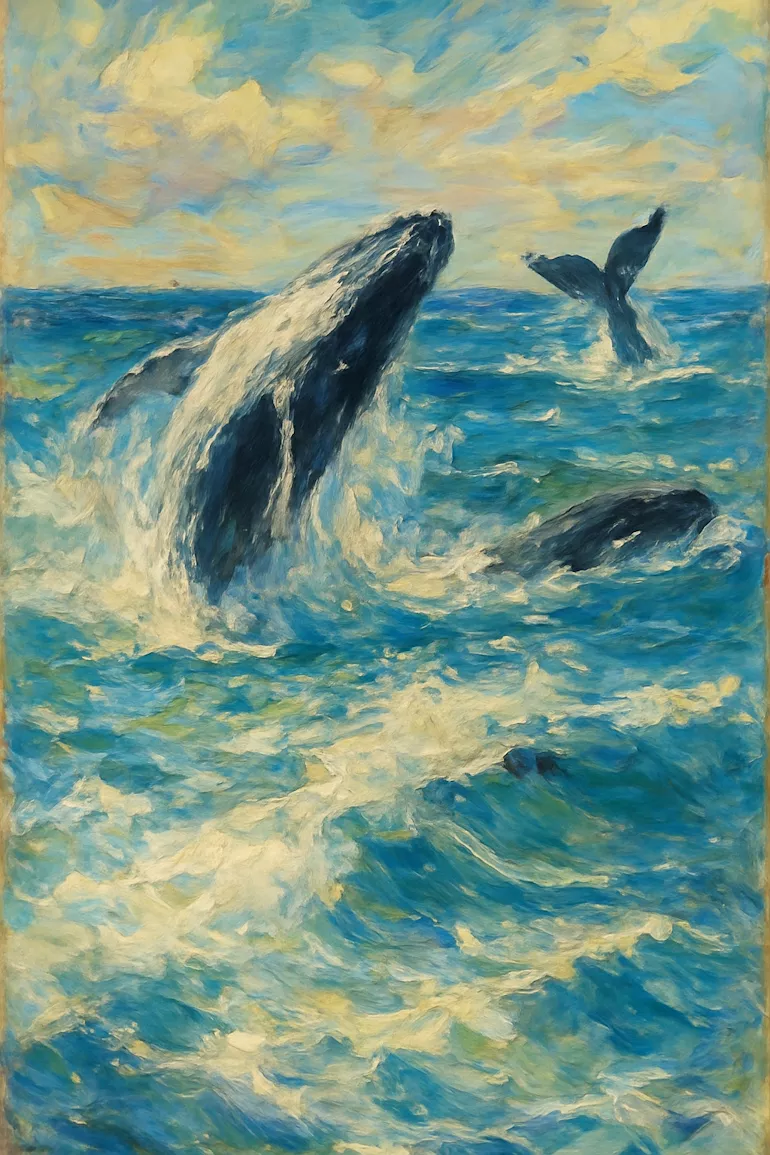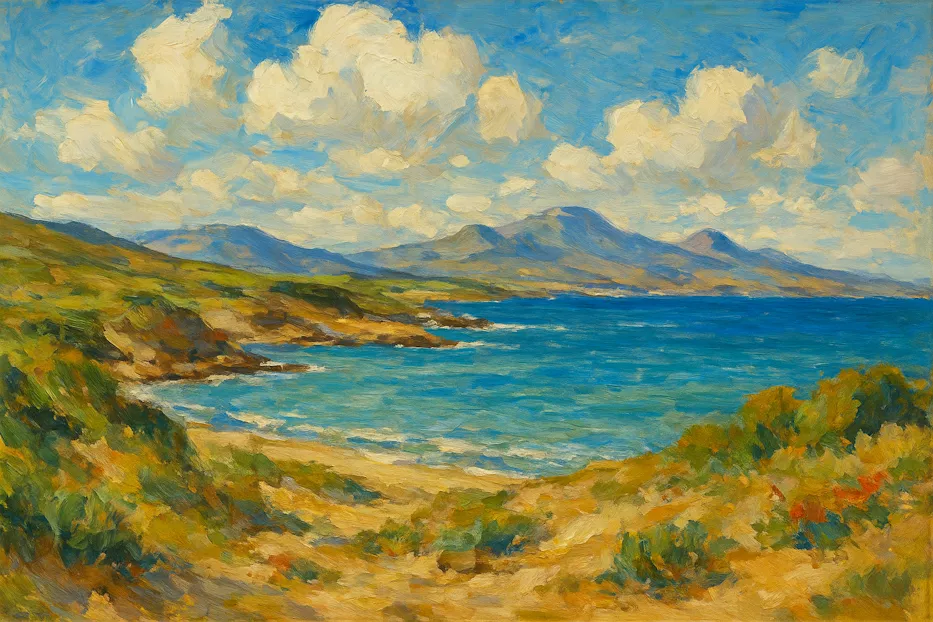Although Islay, the “Queen of the Hebrides,” is internationally famed for its peated single malt whisky, the island holds a deeper, wilder secret for the adventurous traveler.
Beyond the distinctive, smoky distilleries lies a rich, unspoiled landscape—a haven of dramatic sea cliffs, golden-sand beaches, vast heather moorland, and a wildlife spectacle unmatched in the British Isles.
This comprehensive guide is dedicated to the outdoor enthusiast, the hiker, the wildlife-watcher, and the seeker of true solitude. Prepare to put on your boots, breathe in the Atlantic air, and discover the raw, elemental beauty that makes Islay one of Scotland’s most captivating outdoor destinations.
Table of Contents
Islay’s Top Hiking Trails: Where Peat Smoke Meets Panoramic Views
Islay’s relatively gentle landscape, punctuated by rugged coastal drama, offers walking experiences for every fitness level, from challenging hill climbs to leisurely coastal strolls. The island’s sparse population means true wilderness is never far away.
1. The Majestic Heights: Beinn Bheigeir
At 491 meters (1,611 feet), Beinn Bheigeir (often pronounced Ben Vicar) stands as Islay’s highest point. While not a challenging Munro by Scottish standards, the ascent offers a rewarding experience with spectacular panoramic views.
- The Experience: This is less a defined trail and more a rewarding hill walk across moorland and blanket bog. The effort is amply repaid at the summit, where on a clear day, you can survey the entirety of Islay, the rugged Paps of Jura, the Mull of Kintyre, and even catch a distant glimpse of the Irish coast. It’s an excellent route for experiencing Islay’s interior geology and high moorland habitat.
- Key Outdoor Focus: High-altitude views, testing terrain, and geology spotting.
2. Coastal Drama: The Mull of Oa and the American Monument
The Oa Peninsula on the island’s southwestern tip is one of Islay’s most elemental and windswept spots, home to an RSPB nature reserve and a dramatic circular walk.
- The Experience: Starting from the RSPB reserve car park, a well-defined path leads to the striking American Monument, a cylindrical stone tower erected in 1920 to commemorate the sinking of two troop ships off the coast during WWI. The route follows towering sea cliffs, offering constant views of the Atlantic.
- Key Outdoor Focus: Cliff-edge walking, seabird spotting (Guillemots, Razorbills), and an excellent location for viewing marine life and soaring birds of prey. The reserve is a prime habitat for the rare and distinctive Chough.
3. The Path of Peat and Whisky: The Three Distilleries Walk
A quintessential Islay walk that seamlessly blends the island’s famous culture with its coastal beauty. This flat, accessible route runs along the coast from Port Ellen.
- The Experience: A dedicated pathway (approximately 9.7 km or 6 mi round trip) links the iconic south coast distilleries: Laphroaig, Lagavulin, and Ardbeg. The walk offers incredible views over the Sound of Islay and the rugged shore, and while the end-point is a dram, the journey itself is a feast for the eyes and nose, with the scent of peat smoke often carried on the sea breeze.
- Key Outdoor Focus: Accessible coastal walking, photography of iconic distilleries against rugged backdrops, and easy terrain.
4. Beachcombing and Dunes: Machir Bay and The Singing Sands
For those seeking vast stretches of golden sand and rolling dunes, Islay’s coastlines deliver spectacular experiences.
- Machir Bay: Located on the west coast near Kilchoman Distillery, this is often cited as Islay’s most beautiful beach. The walk is a leisurely stroll along the extensive white sands, perfect for sunset photography and feeling the full force of the Atlantic waves.
- The Singing Sands (Traigh Bhan): Near the Carraig Fhada Lighthouse, this beach is famed for the unique acoustic phenomenon where the silica-rich sand produces a squeaking or ‘singing’ sound when walked upon. The walk itself often includes a pleasant loop involving the striking, square-shaped lighthouse.
- Key Outdoor Focus: Geology of sand and dunes, coastal photography, and easy, refreshing walks.

Islay: A World-Class Wildlife and Birdwatching Mecca
Islay is not just a destination; it’s a living, breathing ecosystem, renowned globally for its conservation efforts and the sheer volume of its birdlife, particularly in winter. Its mild, maritime climate, varied habitats (saltmarsh, blanket bog, machair, wet grassland), and two dedicated RSPB reserves—Loch Gruinart and The Oa—make it a must-visit for any nature lover.
The Phenomenon of the Geese Migration
Islay is perhaps best known in the nature world for the spectacular annual arrival of geese.
- Barnacle Geese: Every October, up to 70% of the entire world population of Greenland Barnacle Geese descends upon Islay, traveling from their breeding grounds in Greenland and the Canadian Arctic. Their presence transforms the fields, particularly around Loch Indaal and the RSPB’s Loch Gruinart reserve, with flocks numbering in the tens of thousands. The sound of their collective, shrill barking is an unforgettable auditory experience.
- Greenland White-fronted Geese: Islay also hosts a significant portion (around 40%) of the world population of this species, often found grazing alongside their Barnacle cousins.
- When to Visit: The winter months, from October to March, offer the most spectacular displays of wildfowl.
Spotting Raptors and Rare Avian Wonders
The island’s mix of moorland and sea cliffs provides rich hunting grounds for impressive birds of prey and other rare species.
- The Golden Eagle: These majestic birds are resident on Islay, often seen soaring high over the more rugged areas like The Oa, searching for hares or even stray geese.
- The Chough: A rare, protected bird with glossy black plumage and a distinctive down-curved red bill. Islay is one of the few places in the UK where the Chough thrives, often seen foraging on coastal grasslands.
- Hen Harriers and Peregrine Falcons: These formidable hunters are frequently sighted gliding low over the moorland or patrolling the coastline.
Marine and Land Mammals
Keep your binoculars ready, as Islay’s coastal areas are full of shy, yet rewarding, mammalian life.
- Otters: These elusive creatures can be spotted year-round, typically near secluded sea lochs or rocky shorelines. Patience is key, but a glimpse of a playful otter is a highlight of any Islay trip.
- Seals: Both Grey Seals and Common Seals are common sights, basking on rocks at low tide near sheltered bays like Portnahaven.
- Deer: Islay is home to three species of deer: Red, Roe, and Fallow. The Red Deer, Scotland’s largest land mammal, is a magnificent sight, particularly the stags during the autumn rut.
- Whale Watching: Though less common than the geese, the dramatic sea cliffs of The Oa provide vantage points for spotting larger marine life, including Minke Whales, Orcas (Killer Whales), and various species of dolphins.

The Raw Foundations: Exploring Islay’s Geology and Coastal Features
The outdoor experience on Islay is intrinsically linked to its unique and ancient geology, which has shaped both the landscape and, arguably, the famous peaty flavor of its whisky.
A Journey to ‘Snowball Earth’
Islay holds a globally significant geological secret. The rocks, particularly around the Ballygrant and Port Askaig areas, contain striking evidence of extreme global climate fluctuations that occurred over 700 million years ago, a time dubbed ‘Snowball Earth’.
- Stromatolites: Fossilized collections of tiny organisms found in the Lossit Limestone Formation suggest Islay was once located in a warm, temperate, possibly tropical climate.
- Diamictite: Layers of this ‘striking rock’—a mix of pebbles and boulders—are glacial deposits, which are sandwiched between the warm-climate limestones, providing clear evidence of a massive, sudden global ice age.
Raised Beaches and Dramatic Coastlines
The legacy of the last Ice Age (the Devensian Glaciation) is etched across Islay’s terrain.
- Raised Beaches: As the immense weight of the ice sheets depressed the land, melting ice formed high sea levels. When the ice retreated and the land slowly rebounded, these ancient shorelines were lifted, creating the extensive flat, fertile coastal plains and terraces seen around Laggan Bay and other major bays today.
- The Rinns Complex: The rocks forming the rugged, complex landscapes of the Rinns of Islay, including the picturesque villages of Portnahaven and Port Wemyss, are among the oldest on the island, primarily consisting of pinkish Gneiss. This hard rock gives the west coast its enduring, dramatic resilience against the Atlantic.
- Sea Caves and Arches: The constant battering of the ocean has carved out impressive features, particularly along the rugged southern coast and the Oa Peninsula, creating sea caves and natural arches that are best viewed from a sea adventure tour.
Adventure on Wheels and Water: Cycling, Kayaking, and Sea Tours
Islay’s outdoor pursuits extend beyond walking. Its relatively low elevation and quiet roads make it a paradise for cyclists, while its coast and lochs offer excellent water-based activities.
Cycling the Quiet Roads
With many roads being quiet, single-track lanes, cycling is an ideal way to explore at a slower, more immersive pace.
- Route Highlights: The A846 (the main road running up the east side of the island) and the smaller roads weaving through the Rhinns of Islay offer scenic routes. Local providers offer electric bike (e-bike) hire, making the rolling hills near the center of the island accessible to all.
- Fat-Biking: The wide, firm sands of beaches like Machir Bay are perfect for specialized fat-bikes, offering a unique way to experience the vast coastal stretches.
Sea Adventures and Fishing
To truly appreciate Islay’s coastline, you must see it from the water.
- Coastal Boat Tours: Local operators provide Islay Sea Adventures and bespoke RIB tours, exploring the spectacular sea cliffs, hidden coves, and the Sound of Islay between Islay and Jura. This is the best way to see the sheer scale of the Oa cliffs, spot puffins and other seabirds (seasonal), and encounter seals and otters.
- Fishing: Numerous inland freshwater lochs, such as Loch Ballygrant, offer excellent brown trout fishing, with some areas offering boat hire for a tranquil day on the water. River fishing is also available, providing a peaceful escape into the heart of the island.
Planning Your Islay Outdoor Expedition: Practical Travel Essentials
The adventure begins with the journey. Islay is an accessible yet remote destination, requiring a little preparation to ensure a smooth trip.
Getting There
- Ferry (The Classic Route): The most popular method is the Caledonian MacBrayne (CalMac) ferry from Kennacraig (on the Kintyre peninsula) to Port Askaig. Book well in advance, especially if taking a car. The crossing takes around two hours.
- Flying: Loganair operates flights from Glasgow (GLA) directly to Islay Airport (ILY), a quick 30-minute flight that offers stunning aerial views of the Hebrides.
ISLAY FERRY TICKETS
Getting Around
While the island bus network is reliable for reaching the main towns and some distilleries (like Bowmore, Laphroaig, Lagavulin, and Ardbeg), having your own transport offers maximum flexibility for reaching remote trailheads and reserves.
- Driving on Islay: Be prepared for winding, often single-track roads. Remember the key piece of island etiquette: use the numerous Passing Places to allow oncoming traffic to pass or for faster vehicles to overtake. An important part of the local culture is the “Islay Wave”—a quick, friendly hand-raise as you pass a local.
- Car Hire: Available at the airport, but book ahead, as availability is limited.
Essential Outdoor Gear
The Hebridean weather is famously changeable. Be prepared for four seasons in one day!
- Layered Clothing: Essential for managing temperature changes.
- Waterproofs: A high-quality waterproof and windproof jacket and trousers are non-negotiable.
- Sturdy Boots: Waterproof, supportive hiking boots are needed for the often-boggy moorland and rugged trails.
- Binoculars: Crucial for birdwatching and spotting marine life from the coast.
The Islay Outdoors Conclusion: A Call to the Wild
Islay’s fame is a double-edged sword: the whisky brings the visitors, but the wild, elemental landscape ensures they stay and return. For the outdoor traveler, Islay offers a sanctuary where vast spaces, ancient history, and unparalleled wildlife converge. Whether you are cresting the summit of Beinn Bheigeir, silently watching the majestic flocking of geese over Loch Gruinart, or simply walking the shoreline path between distilleries, Islay provides a depth of natural experience that is both invigorating and profoundly peaceful.

